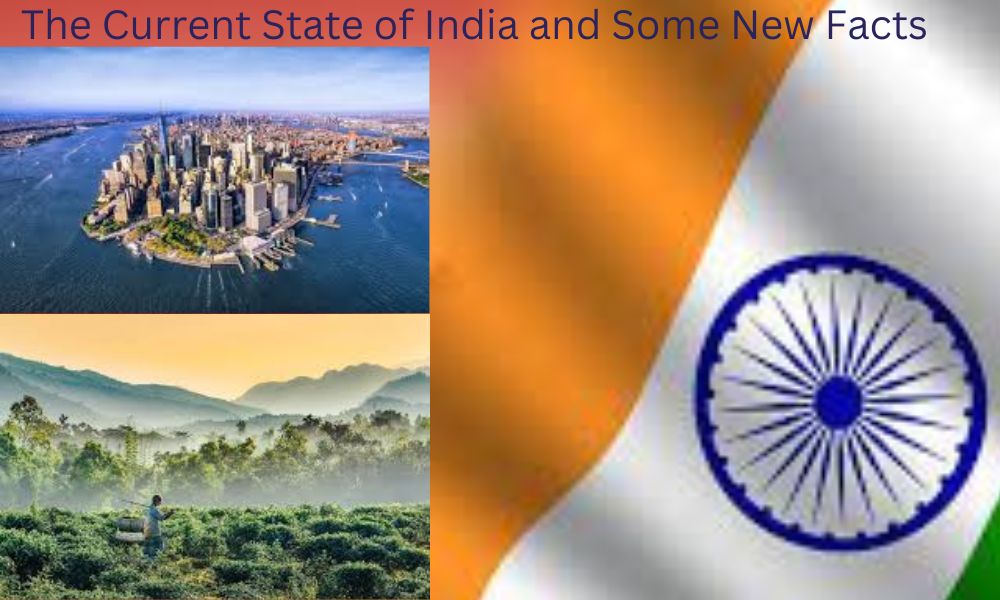The Current State of India and Some New Facts
India, a South Asian country, has always been known for its diversity, vibrant culture, and rich history. However, the current state of the country is marked by a mix of progress and challenges, including economic growth, social and political polarization, and the COVID-19 pandemic. In this blog post, we will explore some new facts about the current state of India and what they might mean for the country’s future.
One of the most significant recent developments in India is the country’s economic growth. According to the International Monetary Fund, India’s economy is projected to grow at a rate of 11.5% in 2021, making it one of the fastest-growing economies in the world. This growth has been driven by a variety of factors, including increased foreign investment, a growing middle class, and a focus on technological innovation. However, the COVID-19 pandemic has had a significant impact on India’s economy, with a decline in economic activity and a rise in unemployment.
Another new fact about the current state of India is the country’s political polarization. India has a long history of political diversity, with a range of political parties and ideologies. However, in recent years, the country has become increasingly polarized, with growing divisions along religious, caste, and regional lines. The rise of the Bharatiya Janata Party (BJP), a right-wing Hindu nationalist party, has further exacerbated these divisions, with critics accusing the party of stoking religious tensions and marginalizing minority communities.
In addition to economic and political challenges, India also faces significant social and environmental concerns. The country is home to some of the world’s most vulnerable communities, including millions of people living in poverty, and is also grappling with the impacts of climate change, including rising temperatures and increasingly severe weather events. The government has taken some steps to address these challenges, including launching the Swachh Bharat Abhiyan, a nationwide campaign to improve sanitation and hygiene, and the National Rural Livelihoods Mission, aimed at reducing poverty and improving livelihoods in rural areas.
 India is also facing significant health challenges, with the COVID-19 pandemic highlighting longstanding issues in the country’s healthcare system. India has experienced one of the world’s worst COVID-19 outbreaks, with millions of cases and hundreds of thousands of deaths. The country has struggled to ramp up its vaccination program, with supply shortages and logistical challenges impeding progress.
India is also facing significant health challenges, with the COVID-19 pandemic highlighting longstanding issues in the country’s healthcare system. India has experienced one of the world’s worst COVID-19 outbreaks, with millions of cases and hundreds of thousands of deaths. The country has struggled to ramp up its vaccination program, with supply shortages and logistical challenges impeding progress.
Despite these challenges, there are also reasons for hope in the current state of India. The country has made significant progress in reducing poverty and improving social indicators, such as access to education and healthcare. The government has launched several initiatives aimed at improving the lives of the poor and vulnerable, such as the Pradhan Mantri Jan Dhan Yojana, which provides financial assistance to the most vulnerable sections of society.
In addition, India has a young and dynamic population, which could be a significant asset for the country’s future. The country’s youth are increasingly educated and tech-savvy, and there is a growing entrepreneurial spirit among young Indians. The government and the private sector are investing in the country’s tech sector, which could help to drive economic growth and create jobs for young Indians.
In conclusion, the current state of India is a mix of economic growth, political polarization, social and environmental challenges, and health concerns. However, there are also reasons for hope, including the government’s efforts to address these challenges and the country’s young and dynamic population. India has the potential to become a prosperous and inclusive democracy, but it will require sustained efforts by the government, civil society, and the private sector to address the country’s significant challenges and build a brighter future for all Indians.
The Current State of Bangladesh and Some New Facts